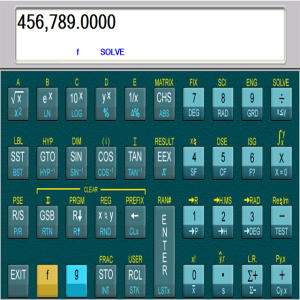
The main reason I use the HP48 at work is to put off people from borrowing my calculator! That is IMHO, if you feel RPN is still better, by all means keep using it. And even if you do, I’d still be quicker on my TI-89, and to reiterate, that’s coming from someone who has used RPN for 20+ years, including under/post grad studies. You may argue that you could program the expression, and yes you can, but that’s hardly what you would routinely do when you have to evaluate an expression that you don’t have the hindsight of thinking you’ll have to run again. But when it comes to problems such as “oh, and what would the answer be if you changed this parameter value in the expression I have spent 30 seconds evaluating”, I instantly regret not using the TI-89. I have a TI-89 and a HP48, and I still use the HP48 about 50% of the time, depending on what calculator I get my hands on 1st when I need it. When you have a long expression, being able to edit just the variable value and thus evaluating your expression for many variables values quickly, RPN is not the greatest tool in the 21st century. That is, until non-RPN calculators started offering the possibility to edit the previous expression. Posted in Arduino Hacks, Retrocomputing Tagged arduino, calculators, retro calculator Post navigationĪs someone who has used a HP48 throughout all his studies, I should be a RPN devout, and I was. Stick around for more retro-modern takes on calculators, or tales of repairing a genuine vintage model. And for maximized retro faux-nostalgia, designed a box that would have looked right at home on an 80s store shelf.
#RPN SCIENTIFIC CALCULATOR WINDOWS CODE#
The source code is available, but you’re on your own for the case and keyboard. The SB116 supports binary, octal, decimal, and hex and boasts some downright useful functions - AND, NOT, OR, XOR, and bitshifts.

The impetus for this build was to replace a particular calculator, a well-used TI Programmer, that’s useful for working with 6502 assembly. It’s a fully custom design, with a hand-built metal case, a custom PCB for the keyboard, and a tiny OLED display for maximum retro green goodness. Created in the legacy of such calculators by HP and Texas Instruments, shows off his SB116, sporting an Arduino Nano under the hood. It calls to mind a time when a calculator was a serious tool, and not just a throwaway toy. There’s something about Reverse Polish Notation (RPN) and the calculators that use it.


 0 kommentar(er)
0 kommentar(er)
